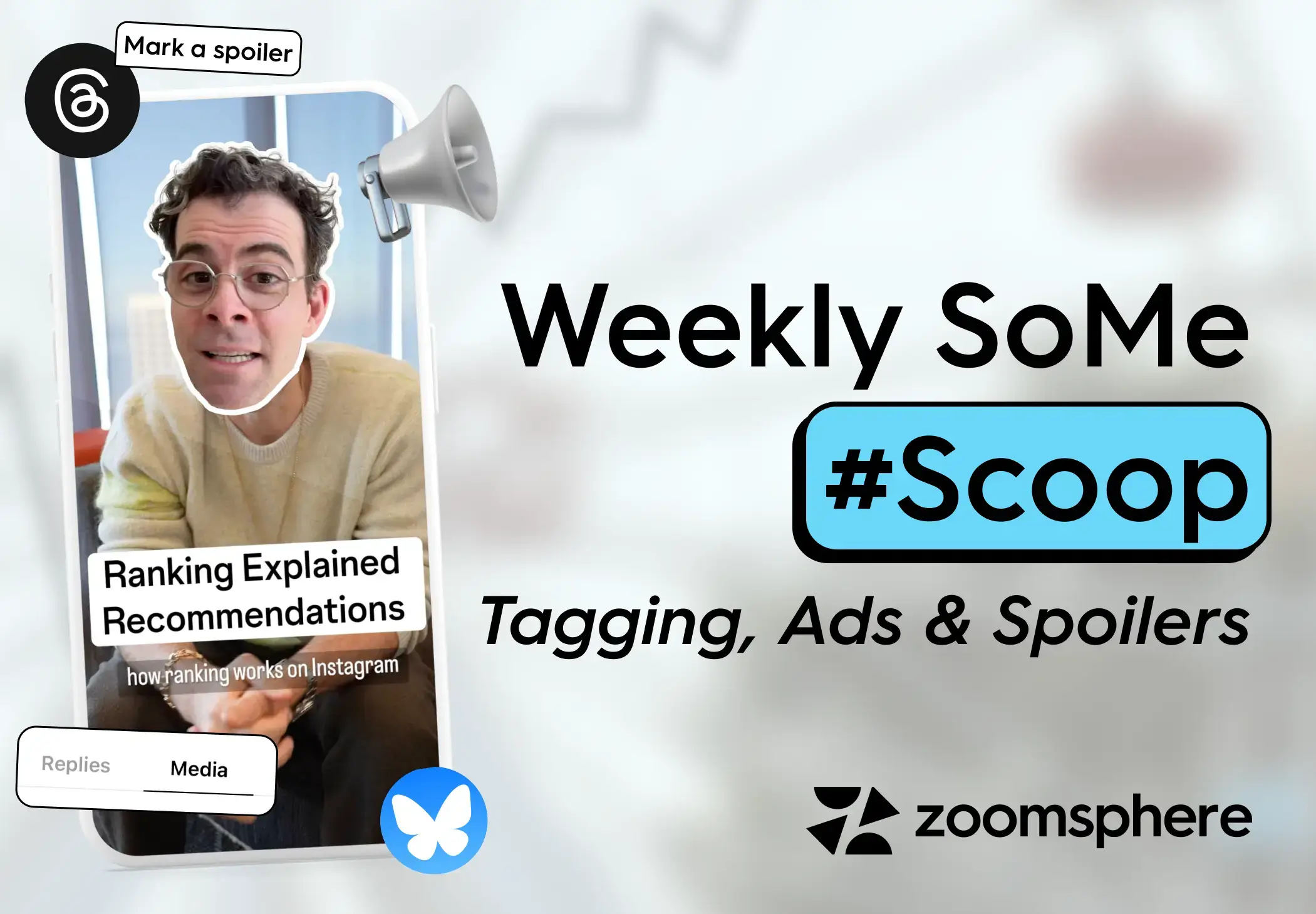The Quiet Power of Saying ‘We Don’t Do That’
%20(1).webp)
Trust signals don’t always show up as shiny seals or glowing reviews. Sometimes, they sound like this: “We don’t do that.”
And ironically, that might be the most credible sentence a brand can say. Because while most teams are busy tap-dancing their way through every RFP and one-off client request, the audience is watching( and judging) through clenched teeth.
66% of people trust a trust signal that’s been third-party verified. Less than half believe what a brand says about itself. So if you're still throwing “yes” around like free samples at a mall kiosk, good luck convincing anyone you have standards.
Now, here's what actually builds trust: BOUNDARIES. Quiet ones. Clear ones. Non-negotiable ones. The kind that repel the wrong fit and reassure the right.
Look, saying no doesn’t make you difficult. It makes you believable. And honestly, in a world where everyone’s trying to prove they do everything? The fastest way to stand out is by meaningfully opting out.
{{form-component}}
Why “We Don’t Do That” Screams Credibility
You know what’s louder than a flashy badge or glowing review on your website? A refusal. That’s right: sometimes trust signals are best expressed by what you won’t do.
When a brand sets a boundary, it sends a silent message: We know where we stand. We won’t bend for every whim. That’s competence. That’s self‑control. That’s real credibility — the kind that makes your prospects pause and say, “This one knows their lane.”
66% of people actually trust content verified by a third party, yet fewer than half believe a brand validating itself. That data kills the myth that you can just say anything and expect it to land. If your brand is constantly shouting every capability, you sound like the guy at a party shouting “Look at me!” — not the one people quietly respect. Self-proclaimed “yes machines” come off like snake oil salesmen.
Think of a restaurant that claims to do everything: sushi, tacos, barbecue, vegan desserts. It sounds desperate. No conviction. It makes you question quality in all those domains. Saying “yes” to everything dilutes your specificity. It weakens your trust badges and credibility because nothing feels real.
Bernard Huang from Clearscope puts it best:
%20(1).webp)
Markets hear the noise of universal yeses. But they feel the focus of a clean no.
If your website is littered with every possible service, you are eroding your own website trust signals. The ideal site doesn’t inflate itself; it clarifies itself. What you exclude becomes as powerful as what you include.
So don’t need more capabilities listed. You need fierce clarity around what you absolutely refuse to do. That boundary becomes your most credible trust signal.
The Profitability of Saying No
Let’s just say it straight: the fastest way to torch your margins isn’t bad marketing. It’s bad fit. One wrong-fit deal doesn’t just underperform; it drags. It drains. It nukes five good deals on the way out. Between churn, morale loss, scope creep, and the 37 Slack threads titled “Quick Q re: deliverables,” the math stops mathing real fast.
What makes this worse?
Most of it gets chalked up as “cost of doing business.” Except it’s not. It’s the cost of saying yes when you should’ve said no.
Not All Volume Is Growth
Saying yes to every client request doesn’t scale your business. It bloats it. It’s the marketing equivalent of trying to put out a grease fire with a can of gasoline: sure, it’s dramatic but not in the way your brand recovers from.
In e-commerce, products with 50+ reviews convert 37% better. With zero reviews? You’re looking at a 70% drop in conversion. Why? Because volume without validation kills trust signals for conversions. The same applies to your brand decisions. If you try to do everything, people trust you for nothing.
Chasing Yes is Expensive. Restraint Pays.
Trust isn’t just a moral virtue. It’s a business multiplier. And restraint (used well) acts as a trustworthy signal in e-commerce and service brands alike. It implies standards. It hints at exclusivity. It whispers, “We’ve seen this before, and we know what we won’t touch.”
High-performing websites don’t just rely on visual badges. They’ve got trust indicators on their website that show boundaries. Clear CTAs, tight messaging, defined offerings — all signs that someone has their act together. And in a market flooded with noise, “having your act together” is currency.
Saying no is never a loss. It’s a filter. A profit-preserving, dignity-saving, margin-defending filter.
And if that sounds too strict for your brand? You might already be bleeding from your yeses.
The No/Yes Matrix for Your Brand
You don’t need more leads. You need more guts. Specifically, the guts to say “no” to the wrong ones — even when they come with a budget, a LinkedIn following, and a sob story about tight timelines. Most teams don’t suffer from a lack of opportunity. They suffer from a lack of veto power.
Let’s stop pretending every request deserves a proposal. It doesn’t. Some should be priced higher. Some should be declined faster. And some should never land in your inbox in the first place.
Now comes the matrix. Literally.
{{cta-component}}
The 2x2 That Saves Your Brand From Itself
Your decisions aren’t about yes or no. They’re about who and why. Here’s the only grid you need: ICP Fit vs Strategic Value.
- Hell No (Low Fit, Low Value)
These requests are sinkholes. The kind that drag your scope, your team, and your sanity down with them. Politely delete.
- Referral Zone (Low Fit, High Value)
Not a match, but useful. Maybe they’re well-connected, loud online, or cash-rich enough to be worth referring to someone else. Build goodwill. Don’t burn time.
- Premium Scope (High Fit, Low Value)
They're a match, but the value's light. That’s your cue to price accordingly. These deals shouldn’t be cheap — they should be strategic.
- Sweet Spot (High Fit, High Value)
The ones you build the business for. Clear alignment, clear upside. Say yes. Build trust. Deliver hard.
Saying Yes Isn’t Strategy — Filtering Is
Knowing how to use trust signals means showing you know who you’re for and who you’re not. The most compelling trust signals factors are in the consistency of what you turn down.
When your “yes” feels rare, it becomes a signal. A credible one. Because in a world drowning in customer-pleasing noise, nothing screams confidence like a brand that knows what doesn’t belong on its menu.
How to Say No Without Sounding Like a Jerk
Let’s be honest; most brands sound defensive when they say no. Like they’re afraid of offending someone with boundaries. But saying no doesn’t have to sting. In fact, when done with clarity and conviction, it becomes one of the most powerful social proof trust signals you can send.
The trick is to stop treating “no” like a rejection and start treating it like an act of respect… for your clients, your standards, and your sanity.
The Scripts That Say “No” Like a Pro
A confident “no” doesn’t ghost the client. It guides them. Try these three scripts and watch how fast people start trusting you more.
1. Sales Script:
“We don’t do X, but here’s a vetted partner who does.”
You still provide value. You still help. And you do it without pretending to be everything. That’s what credibility sounds like in plain English.
2. Success Script:
“We don’t offer Y, because it would lower your outcome quality. Instead, we deliver Z.”
Boundaries are never rude when they’re tied to results. When you anchor your no in outcomes, you signal competence — and competence is the highest form of customer care.
3. Marketing Script:
Publish a “What We Don’t Do” page. It’s counterintuitive. It’s honest. It’s magnetic. And it works. That single page is an instant trust seal — your own in-house trust signals for conversions.
Why Saying No Builds More Reviews Than Saying Yes
93% of buyers read reviews, and 85% say reviews directly influence their decision. But the best reviews aren’t written by people who got what they asked for. They’re written by people who got what was right for them.
Every “no” said with clarity plants the seed for a five-star review. Because when a brand demonstrates self-awareness, it triggers trust faster than any offer ever could. It’s why the most credible companies don’t brag — they set expectations and meet them, precisely.
Boundaries are empathy with a backbone. They don’t shut people out; they filter for those who belong. And that’s how you turn politeness into performance. Because the real pros don’t just sell what they can do, they earn loyalty with what they won’t.

Operationalizing Boundaries: From Gut Feeling to Business System
Every brand loves to brag about its values until it’s time to apply them to an invoice. “Boundaries” sound noble until a big client waves cash across the table — and suddenly, gut feeling turns into “maybe just this once.” But real credibility doesn’t live in intuition; it lives in infrastructure.
Boundaries only build trust when they’re repeatable. When your systems reinforce your standards automatically, not emotionally. That’s where trust signals in marketing stop being cosmetic and start being operational.
1. Filters Are the New Trust Badges
Start where the chaos begins: intake. Add deal-breakers to your forms. Every “no” you automate saves your brand from a very expensive yes. When your filters are transparent, they act like online trust badges examples: proof that you vet, verify, and qualify before saying yes.
And buyers notice. Those checkpoints aren’t friction; they’re confidence signals. They communicate governance, discernment, and control; three qualities that modern consumers trust more than polished branding.
2. Approval Gates Are Your Quietest Marketing Assets
Next up: approval gates. Build sign-off checkpoints into your internal process. Every time a brief, pitch, or proposal passes a gate, that’s another invisible trust indicator on your website — the behind-the-scenes quality control that SEO metrics can’t fake.
These gates don’t just prevent chaos; they contribute directly to SEO trust signals factors. A company that consistently rejects poor-fit work builds predictable satisfaction scores, lower bounce rates, and better behavioral signals — the kind Google interprets as reliability. Boundaries, in other words, are measurable.
3. Post-Mortems: The Science of Knowing When “Yes” Was a Mistake
Every “yes” deserves an autopsy. Track the deals that soured morale or profit margins. Make it policy, not therapy. Identify patterns and codify them. The is brand insurance.
Because pages with authentic user-generated content or reviews can lift conversions by up to 102.4%. But every wrong-fit project tanks your ability to earn those reviews. Every time you say yes to the wrong thing, a conversion angel loses its wings.
Devin Bramhall, Chief Growth Officer at devinbramhall.com, nailed it:
%20(1).webp)
Systematized boundaries are reputation control. Every filter, gate, and documented no is one less moment of doubt for your audience. Because trust isn’t earned once. It’s engineered, line by line, policy by policy.
Brands That Drew the Line and Won Anyway
Saying no doesn’t shrink your market. It expands your authority.
That’s the part most people choke on — they confuse being “open for business” with being open for anything. Which is exactly how credibility erodes: drip by drip, under the weight of every compromise dressed up as flexibility.
But there’s a short list of brands that said no (loudly, publicly) and didn’t just survive it. They thrived. They turned boundaries into trust signals that increase sales. Not soft claims. Not polished sentiment. Measurable gains.
Patagonia: No Logos, More Loyalty
When Patagonia publicly told companies to stop putting their corporate logos on its gear, it wasn’t for style points. It was a hard boundary — and a direct hit on one of its most profitable product lines.
You’d expect a backlash. Instead, they earned something most brands never touch: authenticity that doesn’t need marketing. That decision became a trust seal and certification moment. It told customers: “We mean what we say.” Sales didn’t slump. They surged.
Basecamp: Fewer Features, Stronger Fans
Basecamp didn’t just say no to bad-fit clients — they said no to their own feature bloat. In 2021, they stripped down the product. Some users left. Critics howled.
But the core users stayed. And stayed louder. What Basecamp gave up in mass appeal, they gained in clarity. That clarity became a trust signal — not just for customers, but for team morale. Nobody's confused about what Basecamp is for.
{{form-component}}
Finance Brands That Actually Say “No”
Look at consumer finance. The brands that openly state, “We don’t do payday loans,” or “We avoid subprime approvals,” aren’t pushing people away. They’re qualifying demand.
Turns out, transparency is good business. Saying no to risk attracts the right clients. Because while volume might tempt you, quality converts better and sticks.
Boundaries Beat Influencers (Yes, Really)
In a GWI report, 66% of consumers said they trust badges over influencer content. Why? Because influencers can be bought. Boundaries can’t.
When you draw the line and stick to it, it’s not just admirable — it’s rare. And rare builds trust. Not by shouting louder, but by standing still while everyone else shapeshifts.
The brands that win trust don’t scream what they offer. They show what they refuse to offer. That's not a niche move. It's a reputation move. And it works every damn time.
Your Next Yes Depends on the Quality of Your No
Trust signals aren’t built through overpromises. They’re built through restraint. Boundaries, policy, intentional blind spots. These are the things your customers quietly scan for, even when they don’t realize it. When done right, “we don’t do that” reads louder than your 14-page pitch deck. Because trust signals don’t just live in badges and logos. They live in what you say no to and how cleanly you say it.
Oh, you think flexibility is trust? Ask the 87% of business leaders who believe their customers trust them... and then compare it to the 30% of consumers who actually do. That delta humiliating and expensive.
Saying yes to everything feels generous. But it’s not generous. It’s insecure. Every time you say yes to a project that doesn’t fit, or a timeline that smells rushed, or a scope that was clearly printed with invisible ink… something in your credibility cracks a little.
Next time someone asks you to juggle chainsaws on a unicycle, smile. Say, “We don’t do that.”
You just earned more trust than 1,000 empty yeses ever could.












Heading 1
Heading 2
Heading 3
Heading 4
Heading 5
Heading 6
Lorem ipsum dolor sit amet, consectetur adipiscing elit, sed do eiusmod tempor incididunt ut labore et dolore magna aliqua. Ut enim ad minim veniam, quis nostrud exercitation ullamco laboris nisi ut aliquip ex ea commodo consequat. Duis aute irure dolor in reprehenderit in voluptate velit esse cillum dolore eu fugiat nulla pariatur.
Block quote
Ordered list

- Item 1
- Item 2
- Item 3
Unordered list
- Item A
- Item B
- Item C
Bold text
Emphasis
Superscript
Subscript



.webp)


%20(1).webp)

%20(1).webp)

